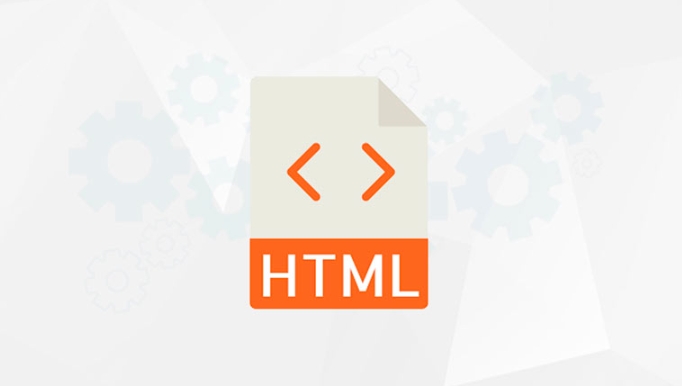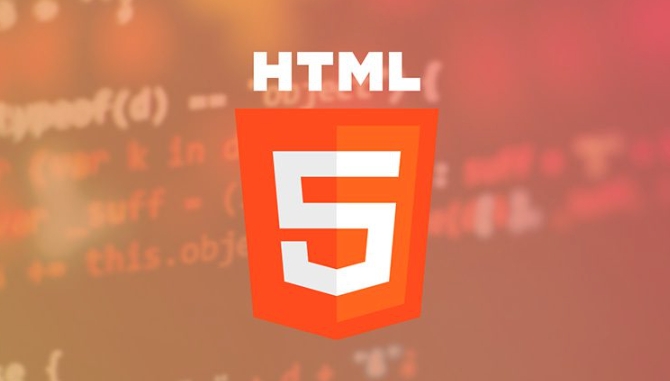Why must the id among html attributes be unique within a document?
Jun 28, 2025 am 01:55 AMIDs must be unique in HTML because they ensure reliable element identification for JavaScript, CSS, and accessibility. 1. IDs uniquely identify one element, allowing precise targeting via JavaScript and styling with CSS. 2. Duplicate IDs cause JavaScript to select only the first or wrong element, leading to failed logic. 3. Screen readers and ARIA features may misbehave, confusing users. 4. CSS styling remains applied but becomes unpredictable due to specificity issues. Always use unique IDs to prevent errors across technologies.

When building a webpage, one of the basic rules you'll come across is that id attributes must be unique within an HTML document. This isn't just a suggestion — it's a fundamental rule for a reason. Let’s break down why this matters and what happens when you don’t follow it.

1. IDs Are Meant to Identify One Specific Element
An id in HTML is like a person's social security number — it should uniquely identify one individual. When you assign an id to an element, you're telling the browser, “This is the only one of its kind on this page.”

This uniqueness allows:
- JavaScript to easily target and manipulate that specific element using
document.getElementById(). - CSS to style that exact element without accidentally affecting others.
If multiple elements share the same id, browsers typically only recognize the first one, which can lead to unexpected behavior in both styling and scripting.

For example:
<p id="note">First note</p> <p id="note">Second note</p>
If you try to select #note in CSS or document.getElementById('note') in JavaScript, only the first paragraph will be affected.
2. Conflicts in JavaScript Selection and Manipulation
When you use JavaScript to access an element by its ID, the language expects there to be only one match. That’s why document.getElementById() returns a single element, not a list.
If you have duplicate IDs:
- Your script might grab the wrong element.
- Some elements may become completely inaccessible via ID.
- Logic that depends on that element (like form validation or event handling) could fail silently.
This makes debugging harder because everything seems fine at a glance, but things just don’t work as intended.
3. Accessibility and Semantic Meaning Suffer
Screen readers and other assistive technologies rely heavily on predictable HTML structures. Duplicate IDs can confuse these tools, especially when they're used in ARIA attributes or linked with labels (e.g., in forms).
For instance, if two form inputs share the same id and are associated with a label using the for attribute, the screen reader might not know which input to focus.
Also, some JavaScript frameworks and libraries expect IDs to be unique. Breaking that assumption can cause bugs that aren't always easy to trace back to duplicate IDs.
4. Styling Can Become Unreliable
While CSS will still apply styles to all elements matching a duplicated ID selector, the cascade and specificity can behave unpredictably. For example:
#box {
color: red;
}Even though both elements have id="box", the browser applies the style to both — but if more complex selectors or scripts are involved, things can get messy quickly.
And since IDs have high specificity, overriding their styles can become unnecessarily tricky.
In short, keeping your id values unique ensures smoother interactions between HTML, CSS, and JavaScript — and avoids confusion for both browsers and developers. It's a small rule that helps prevent big headaches later on.
The above is the detailed content of Why must the id among html attributes be unique within a document?. For more information, please follow other related articles on the PHP Chinese website!

Hot AI Tools

Undress AI Tool
Undress images for free

Undresser.AI Undress
AI-powered app for creating realistic nude photos

AI Clothes Remover
Online AI tool for removing clothes from photos.

Clothoff.io
AI clothes remover

Video Face Swap
Swap faces in any video effortlessly with our completely free AI face swap tool!

Hot Article

Hot Tools

Notepad++7.3.1
Easy-to-use and free code editor

SublimeText3 Chinese version
Chinese version, very easy to use

Zend Studio 13.0.1
Powerful PHP integrated development environment

Dreamweaver CS6
Visual web development tools

SublimeText3 Mac version
God-level code editing software (SublimeText3)
 Applying Semantic Structure with article, section, and aside in HTML
Jul 05, 2025 am 02:03 AM
Applying Semantic Structure with article, section, and aside in HTML
Jul 05, 2025 am 02:03 AM
The rational use of semantic tags in HTML can improve page structure clarity, accessibility and SEO effects. 1. Used for independent content blocks, such as blog posts or comments, it must be self-contained; 2. Used for classification related content, usually including titles, and is suitable for different modules of the page; 3. Used for auxiliary information related to the main content but not core, such as sidebar recommendations or author profiles. In actual development, labels should be combined and other, avoid excessive nesting, keep the structure simple, and verify the rationality of the structure through developer tools.
 Implementing Clickable Buttons Using the HTML button Element
Jul 07, 2025 am 02:31 AM
Implementing Clickable Buttons Using the HTML button Element
Jul 07, 2025 am 02:31 AM
To use HTML button elements to achieve clickable buttons, you must first master its basic usage and common precautions. 1. Create buttons with tags and define behaviors through type attributes (such as button, submit, reset), which is submitted by default; 2. Add interactive functions through JavaScript, which can be written inline or bind event listeners through ID to improve maintenance; 3. Use CSS to customize styles, including background color, border, rounded corners and hover/active status effects to enhance user experience; 4. Pay attention to common problems: make sure that the disabled attribute is not enabled, JS events are correctly bound, layout occlusion, and use the help of developer tools to troubleshoot exceptions. Master this
 Configuring Document Metadata Within the HTML head Element
Jul 09, 2025 am 02:30 AM
Configuring Document Metadata Within the HTML head Element
Jul 09, 2025 am 02:30 AM
Metadata in HTMLhead is crucial for SEO, social sharing, and browser behavior. 1. Set the page title and description, use and keep it concise and unique; 2. Add OpenGraph and Twitter card information to optimize social sharing effects, pay attention to the image size and use debugging tools to test; 3. Define the character set and viewport settings to ensure multi-language support is adapted to the mobile terminal; 4. Optional tags such as author copyright, robots control and canonical prevent duplicate content should also be configured reasonably.
 Best HTML tutorial for beginners in 2025
Jul 08, 2025 am 12:25 AM
Best HTML tutorial for beginners in 2025
Jul 08, 2025 am 12:25 AM
TolearnHTMLin2025,chooseatutorialthatbalanceshands-onpracticewithmodernstandardsandintegratesCSSandJavaScriptbasics.1.Prioritizehands-onlearningwithstep-by-stepprojectslikebuildingapersonalprofileorbloglayout.2.EnsureitcoversmodernHTMLelementssuchas,
 HTML for email templates tutorial
Jul 10, 2025 pm 02:01 PM
HTML for email templates tutorial
Jul 10, 2025 pm 02:01 PM
How to make HTML mail templates with good compatibility? First, you need to build a structure with tables to avoid using div flex or grid layout; secondly, all styles must be inlined and cannot rely on external CSS; then the picture should be added with alt description and use a public URL, and the buttons should be simulated with a table or td with background color; finally, you must test and adjust the details on multiple clients.
 How to associate captions with images or media using the html figure and figcaption elements?
Jul 07, 2025 am 02:30 AM
How to associate captions with images or media using the html figure and figcaption elements?
Jul 07, 2025 am 02:30 AM
Using HTML sums allows for intuitive and semantic clarity to add caption text to images or media. 1. Used to wrap independent media content, such as pictures, videos or code blocks; 2. It is placed as its explanatory text, and can be located above or below the media; 3. They not only improve the clarity of the page structure, but also enhance accessibility and SEO effect; 4. When using it, you should pay attention to avoid abuse, and apply to content that needs to be emphasized and accompanied by description, rather than ordinary decorative pictures; 5. The alt attribute that cannot be ignored, which is different from figcaption; 6. The figcaption is flexible and can be placed at the top or bottom of the figure as needed. Using these two tags correctly helps to build semantic and easy to understand web content.
 What are the most commonly used global attributes in html?
Jul 10, 2025 am 10:58 AM
What are the most commonly used global attributes in html?
Jul 10, 2025 am 10:58 AM
class, id, style, data-, and title are the most commonly used global attributes in HTML. class is used to specify one or more class names to facilitate style setting and JavaScript operations; id provides unique identifiers for elements, suitable for anchor jumps and JavaScript control; style allows for inline styles to be added, suitable for temporary debugging but not recommended for large-scale use; data-properties are used to store custom data, which is convenient for front-end and back-end interaction; title is used to add mouseover prompts, but its style and behavior are limited by the browser. Reasonable selection of these attributes can improve development efficiency and user experience.
 How to handle forms submission in HTML without a server?
Jul 09, 2025 am 01:14 AM
How to handle forms submission in HTML without a server?
Jul 09, 2025 am 01:14 AM
When there is no backend server, HTML form submission can still be processed through front-end technology or third-party services. Specific methods include: 1. Use JavaScript to intercept form submissions to achieve input verification and user feedback, but the data will not be persisted; 2. Use third-party serverless form services such as Formspree to collect data and provide email notification and redirection functions; 3. Use localStorage to store temporary client data, which is suitable for saving user preferences or managing single-page application status, but is not suitable for long-term storage of sensitive information.






